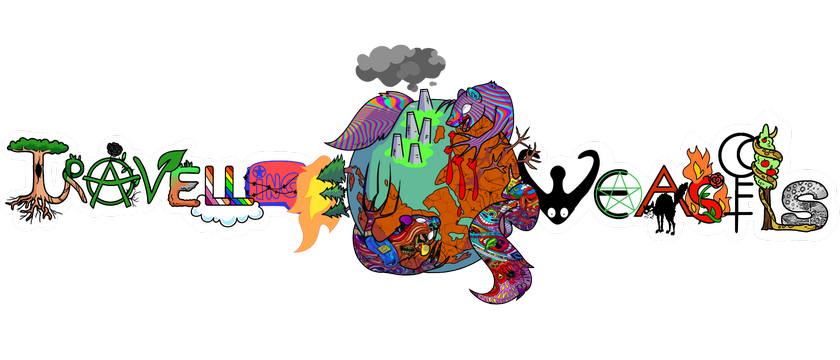Nepal is a trekker’s heaven, known for its awe-inspiring Himalayan scenes, wealthy social encounters, and experiences that test both body and soul. Among the numerous trekking choices accessible, the Manaslu Circuit trek stands out as a genuine jewel, advertising unparalleled common magnificence, a profound social encounter, and an off-the-beaten-path enterprise. For those looking for an alternative to the more swarmed Annapurna and Everest treks, the Manaslu trek Nepal is the ideal choice. This direct gives a comprehensive diagram of everything you require to know approximately the Manaslu Circuit Trek—from what makes it extraordinary to how to get ready and what to anticipate along the path. Let’s investigate why the Manaslu trek is way better for you!
Why Select the Manaslu Circuit Trek?
Here’s why the Manaslu trek Nepal is worth your time:
- Off-the-Beaten-Path Enterprise: The Manaslu trek is less swarmed than prevalent treks like Annapurna and Everest Base Camp, permitting a more quiet and immersive experience.
- Cultural abundance: From Hindu towns in the lower elevations to Tibetan Buddhist communities higher up, the trek offers a special mix of Nepalese and Tibetan cultures.
- Spectacular sights: All through the trek, you’ll be remunerated with all-encompassing sights of towering crests, counting Mount Manaslu, Himalchuli, Ganesh Himal, and the Annapurna range.
- High pass crossing: The highlight of the trek is the Larkya La Pass (5,160 meters), an exciting and challenging crossing that gives jaw-dropping mountain views.
- Pristine nature: As part of the Manaslu Preservation Range, the locale is home to different vegetation and fauna, including the tricky snow leopard.
Permits Required for the Manaslu Circuit Trek
Manaslu Confined Zone Allow (RAP):
- September to November: USD 100 for the first 7 days, USD 15 per day thereafter.
- December to Admirable: USD 75 for the first 7 days, USD 10 per day thereafter.
Also, depending on the zone:
- Manaslu Preservation Zone Permit (MCAP): Required for passage into the Manaslu Preservation Area. Costs USD 30 per person.
- Annapurna Preservation Zone Permit (ACAP): Required as the trek exits into the Annapurna locale after Larkya La Pass. Costs USD 30 per person.
Since solo trekking is not permitted in the Manaslu locale, you’ll also need to contract an authorized direct or connect with a trekking group.
The Best Time to Trek the Manaslu Circuit
Autumn (September to November):
- The most well-known season for trekking in Nepal.
- Stable climate, clear skies, and great mountain views.
- Comfortable temperatures during the day but cold at night.
Spring (to May):
- Another perfect season for the trek.
- Blooming rhododendrons include dynamic colours on the trail.
- Clear mornings with expanding chances of evening clouds.
Winter (December to February):
- Possible but challenging due to overwhelming snowfall, particularly at Larkya La Pass.
- Ideal for trekkers looking for isolation and willing to brave the cold.
Monsoon (June to August):
- Not suggested due to overwhelming precipitation, avalanches, and leeches.
- Trails ended up dangerous, and sights are regularly obscured.
Accommodation and Food
- Rooms: Basic twin-sharing rooms with beds, covers, and pillows.
- Food: Nepali dishes like dal bhat (rice and lentils) are staples, along with noodles, pasta, soups, and Tibetan bread.
- Facilities: Restricted comforts like shared lavatories, cold water for washing, and paid charging for electronics.
Challenges of the Manaslu Trek
High Altitude:
- Altitude affliction is a concern, particularly at Larkya La Pass (5,160 meters).
- Acclimatization days and moderate risings are essential.
Long Hours of Trekking:
- Expect 6–8 hours of trekking per day on rough terrain.
- Stamina and continuance are key.
Weather Conditions:
Remote Location:
Packing List for the Manaslu Circuit Trek
Clothing:
- Warm layers (downy, down coat, warm base layers)
- Waterproof coat and pants
- Trekking pants and shirts
- Hat, gloves, and scarf
Gear:
- Sturdy trekking boots
- Sleeping sack (evaluated for -10°C or lower)
- Trekking poles
- Backpack (40–60 liters)
Miscellaneous:
- Water filtration tablets
- First aid kit
- Sunscreen and lip balm
- Snacks and vitality bars
Responsible Trekking Practices
- Leave No Trace: Carry all your waste and dodge littering.
- Respect Nearby Cultures: Dress humbly and take after social norms.
- Use Nearby Administrations: Bolster teahouses, guides, and porters.
- Minimize Plastic Utilization: Refill water bottles instead of buying plastic bottles.
Culture Along the Manaslu Trek
Lower Locale (Hindu Influence)
- Villages in lower heights (like Soti Khola and Machha Khola) are overwhelmingly Hindu.
- Expect to see terraced farmlands, supplication banners, and conventional Nepalese homes.
Higher Locale (Buddhist Influence)
- As you climb, Tibetan Buddhist culture gets to be prominent.
- Villages like Samagaun, Lho, and Sho reflect Tibetan conventions, with religious communities, chortens, and supplication wheels.
- The Tsum Valley (discretionary side trek) offers a more profound jump into Tibetan culture, with sacrosanct destinations like Mu Gompa and Milarepa Cave.
Festivals and Traditions
- Losar: The Tibetan New Year, celebrated with moves, feasts, and prayers.
- Mani Rimdu: A colourful Buddhist celebration including friars performing conventional dances.
- Interacting with local people in teahouses and towns gives knowledge into their straightforward, community-focused way of life.
Conclusion
FAQs about the Manaslu Trek
Can apprentices do the Manaslu Trek?
How long is the trek?
Is the trek safe?
Do I require travel insurance?
What is the danger level?
What kind of accommodation is available?
What nourishment is accessible during the trek?
Can I drink tap water?
Is Wi-Fi available?
How much does the trek cost?
Booking Process for Manaslu Circuit trek by Everest Trekking Routes:
Contact Details:
- Company address: Everest Trekking Routes Pvt. Ltd.
- 16 Khumbu, Nayabazaar, Kathmandu, Nepal
- Mobile : +977-9843467921 (Rabin)
- Email: info@everesttrekkingroutes.com
- URL: www.everesttrekkingroutes.com
ABOUTME
We overland. We eat plants and fungi. We live outside as much as possible. We are all connected. A female travel blogger overlanding and writing about ecotourism, ethical and sustainable travel, socially conscious travel and housesitting. An online travel magazine since 2015.



Disqus Comment
Facebook Comment